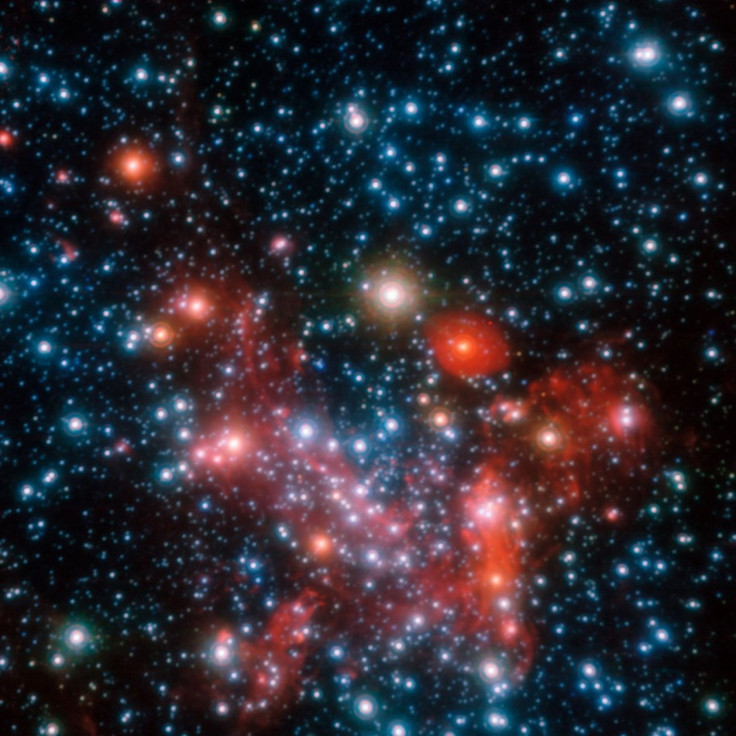Black Hole Eats Dust for Dinner

Astrophysicists now have a snapshot of a rare event for the first time: a black hole eating its cold and dusty dinner.
Black holes are super dense regions in the universe where space and time collapse. Their gravity is so forceful, not even light can escape, so it comes as no surprise that stars and planets and all sorts of galactic goodies would become black hole fodder.
In the first recorded case, to be published in the Jan. 5 issue of the journal Nature, the dinner came in the form of a gas cloud three times the size of the Earth.
This is an unprecedented opportunity to obtain unique observations and insight into the processes that go on as gas falls into a black hole, heats up and emits light, Eliot Quataert, theoretical astrophysicist and University of California, Berkeley, said in a statement. It's a neat window onto a black hole that's actually capturing gas as it spirals in.
Astronomers spent the past 20 years using the European Southern Observatory's Very Large Telescope to get a peek at a supermassive black hole at the center of the Milky Way.
However, in the last seven years, researchers noticed that the cloud had doubled in speed and stretched out. Scientists expect the cloud will reach its closest point to the black hole by mid-2013.
The idea of an astronaut close to a black hole being stretched out to resemble spaghetti is familiar from science fiction, lead author Stefan Gillessen, an astronomer at the Max-Planck-Institute for Extraterrestrial Physics, said in a statement. But we can now see this happening for real to the newly discovered cloud. It is not going to survive the experience.
Researchers expected gas would feed black holes, but they hadn't had the opportunity to view the process before.
Chung-Pei Ma, an astronomer at U.C. Berkeley, who was uninvolved in the current study, headed a group that published a study in December of two of the biggest observed black holes, each 10 billion times the Sun's size.
How did these monsters get so big? What did they eat? I mean, somebody was feeding them, Ma told National Public Radio. And we believe when they were youths, they probably gobbled up lots and lots of gas that was available to them in their parent galaxies. And they got really big and today, they live in very quiet galaxies, in retirement, without much gas. So they were kind of hard to find.
At the center of the Milky Way, the as Sgr A* (pronounced Sagittarius A star) black hole is preparing to gobble up its next meal, which astronomers noticed has already become shredded at its outer edges.
The next two years will be very interesting and should provide us with extremely valuable information on the behavior of matter around such massive objects, and its ultimate fate, said Reinhard Genzel, professor of physics at both UC Berkeley and the Max Planck Institute for Extraterrestrial Physics in Garching, Germany.
© Copyright IBTimes 2024. All rights reserved.











